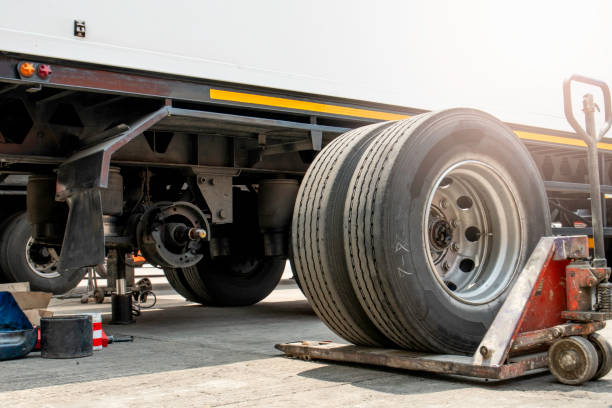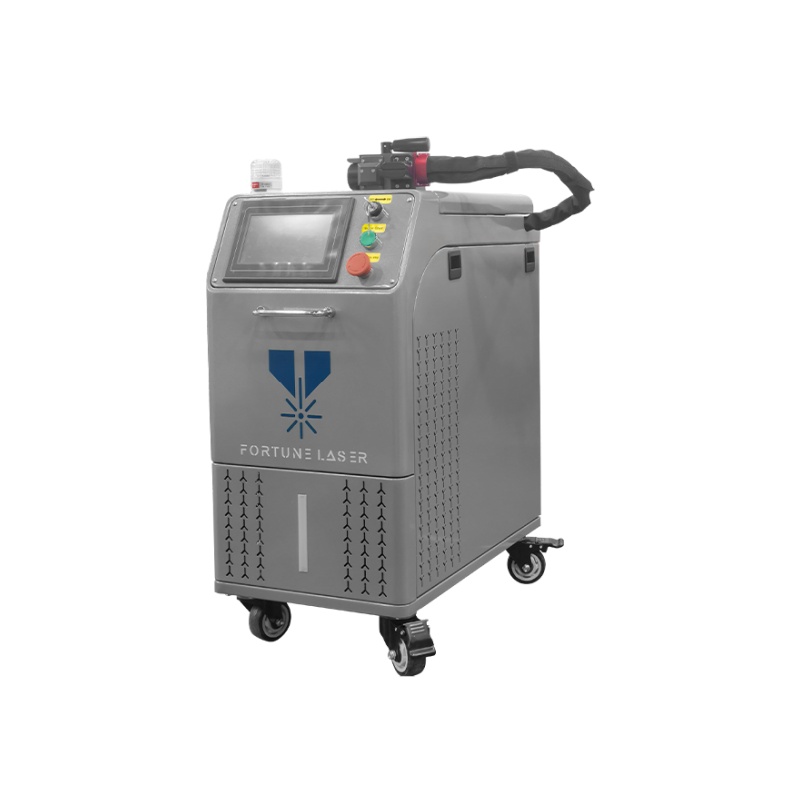In tractor-trailer repair, the daily fight against corrosion is a constant. Rust and weak paint put a vehicle’s frame and safety at risk. They also lower its value. For many years, the auto industry has relied on older techniques. Sandblasting and chemical stripping were the main ways to clean surfaces.. These methods work, but they have high costs for the equipment, the operator, and the environment.
Now, an advanced technology is changing surface preparation. Laser cleaning, a precise and non-destructive process, offers an effective alternative for tractor-trailer repair. It removes the drawbacks of older methods while delivering high-quality results. For professionals using conventional techniques, understanding this technology is essential for staying competitive. This article explains how laser cleaning works, its benefits for heavy vehicle maintenance.
The Costs of Conventional Cleaning in Tractor Trailer Repair
Shops that specialize in tractor-trailer repair know the challenges of traditional surface preparation. These methods introduce inefficiencies and hazards that affect the entire operation.
Abrasive Blasting (Sandblasting)
This method uses high-pressure particles to strip surfaces. Sandblasting is fast on large areas, but the process is aggressive and imprecise. It often damages the underlying metal by creating pits or thinning the material, which can compromise the structural integrity of a chassis. Sandblasting also generates large amounts of secondary waste and hazardous dust. Operators must wear cumbersome protective suits to prevent silicosis, a severe lung disease.
Chemical Stripping
This process uses corrosive solvents to dissolve coatings. Chemical stripping can be more precise than blasting, but it introduces risks. Operators are exposed to toxic fumes and the danger of chemical burns. The process is often slow and requires long dwell times. The resulting hazardous waste is expensive and difficult to dispose of legally.
Mechanical Methods
Grinding and wire brushing are common for small-scale work. These methods are labor-intensive and produce inconsistent results. They can gouge the metal, creating an unsuitable surface for new coatings. For a full chassis, these manual tools are not efficient for comprehensive tractor-trailer repair.
The Science of Laser Cleaning for Tractor Trailer Repair
Laser cleaning operates on a principle called laser ablation. The technology uses a focused beam of light to remove contaminants without touching the underlying surface. This process is precise, controllable, and different from the methods it replaces.
The core concept is the ablation threshold. Every material has a specific energy level at which it will vaporize, or ablate. Rust, paint, and oil have a much lower ablation threshold than the steel or aluminum of a trailer’s frame. A laser cleaning system is calibrated with high precision. It delivers energy that is above the threshold of the contaminant but safely below the threshold of the substrate metal.
The laser emits short, powerful pulses of light. These pulses strike the surface. The contaminant layer absorbs the energy. The layer is instantly vaporized into a fine dust. An integrated fume extraction system captures this dust, leaving a clean, residue-free surface. Once the bare metal is exposed, it reflects the laser’s energy, and the process stops automatically. This self-limiting feature makes it impossible to damage the underlying substrate, preserving the component’s integrity.
Advantages of Laser Cleaning in Tractor Trailer Repair
Adopting laser cleaning provides a range of benefits that address the main pain points in fleet maintenance and repair.
Quality and Asset Preservation
Laser cleaning is a non-contact, non-abrasive process. It does not weaken the metal substrate like sandblasting does. This preservation is critical for extending the service life of a tractor-trailer. The clean surface it creates is also ideal for downstream processes. Laser-cleaned surfaces make welds stronger. They also help paint stick better. This lowers the chances of early damage.
Efficiency and Uptime
The biggest impact on a shop’s bottom line is the reduction in total process time. Laser cleaning requires minimal setup. It generates almost no post-job cleanup. Technicians do not spend hours sweeping up abrasive media or neutralizing chemical spills. This efficiency means a vehicle spends less time in the shop and more time on the road.
Safety for Operators
Laser cleaning eliminates the most severe hazards of traditional methods. It removes the risk of silicosis from airborne dust and exposure to toxic chemicals. The only required personal protective equipment (PPE) is a pair of certified safety goggles. This is a stark contrast to the full-body suits needed for blasting. This creates a safer work environment.
Cost and Environmental Impact
A laser system runs on electricity. It doesn’t use things like abrasive materials or chemical cleaners. No extra waste is left behind. This removes the ongoing cost of buying supplies and paying for special waste disposal. The upfront price is higher. Still, the savings over time are strong. One study found a $50,000 laser could save about $20,000 each year in supplies and labor. That means it pays for itself quickly.
Real-World Applications on Heavy-Duty Frames
The benefits of laser cleaning aren’t just ideas on paper. They are proven every day in tough industrial settings. The method is still catching on in tractor-trailer shops. But it’s already common in automotive, aerospace, and heavy machinery work, where the same jobs are required.
Applications include:
-
Precision Rust Removal: On chassis and frames, handheld laser systems are used to remove corrosion from hard-to-reach areas and around sensitive components without causing damage. The process leaves a perfectly clean, paint-ready surface.
-
Weld Preparation and Cleaning: Laser cleaning strips away contaminants from weld seams far more effectively than wire brushes, ensuring stronger, more reliable welds without pitting or altering the metal’s profile.
Many demos and case studies show how fast and clean this process works on large steel frames. They prove it is a good fit for the tractor-trailer industry. The results are easy to see. They confirm the laser can take on tough cleaning jobs while keeping the metal strong.
Conclusion: An Important Investment in the Future of Repair
Taking care of tractor-trailer chassis requires both quality and speed. There is no room for cutting corners. Older methods have been used for years. But they cause damage, pose safety risks, and waste time.
Laser cleaning represents a new approach. It is a data-driven, precise technology that delivers a higher quality result more efficiently and safely. For any tractor-trailer repair shop, it is a strong competitive advantage. Laser cleaning cuts supply costs, lowers labor needs, and speeds up work. It also helps protect valuable equipment. These benefits make the return on investment clear. Choosing this technology is more than just buying new tools. It’s a step toward a safer, more profitable, and cleaner future.
Post time: Sep-28-2025











